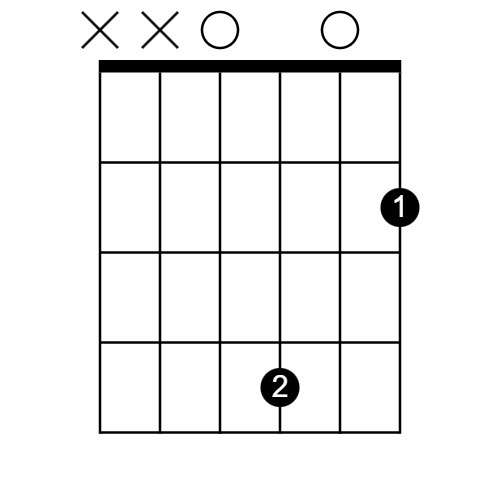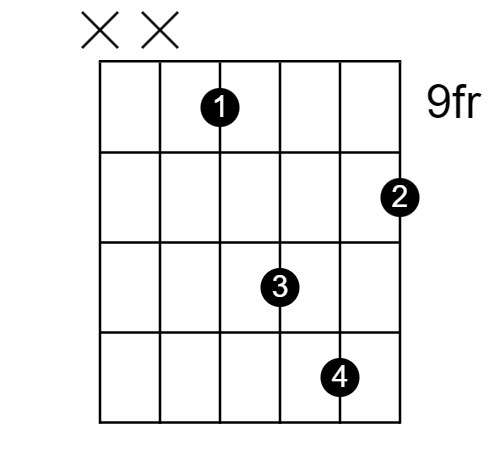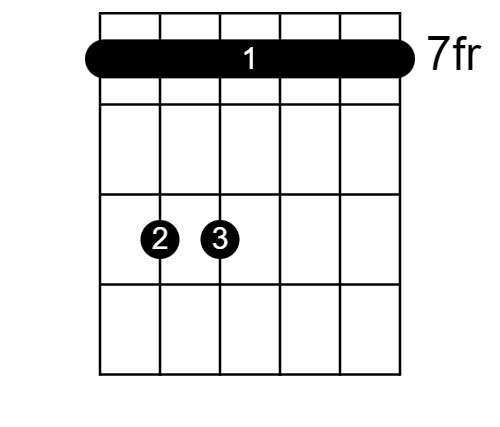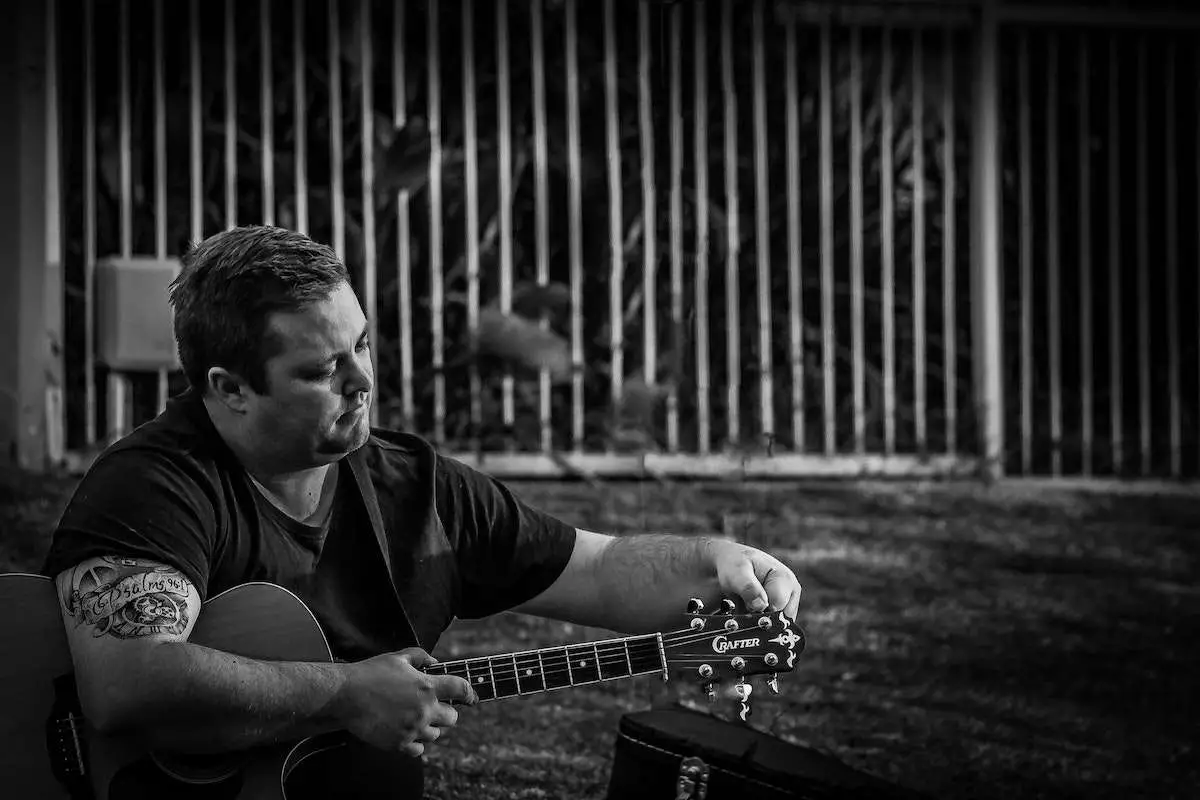Are you ready to take your guitar playing to new emotional heights? Brace yourself for the captivating world of guitar chords, where every strum has the power to transport you to a different realm of music. Among these enchanting chords, the Bm guitar chord holds a special place. With its haunting yet beautiful sound, the B minor chord has played a significant role in countless musical compositions across various genres.
In this article, we’ll unravel the secrets of understanding the B m guitar chord. We will also explore its construction, discover its captivating variations, delve into its common usage in popular songs, and equip you with invaluable tips to master this essential chord.

Basic Theory of The Bm Guitar Chord
A chord, in music theory, is a combination of three or more notes played simultaneously, creating a harmonious sound. Chords serve as the building blocks of music, providing a foundation for melodies, harmonies, and progressions.
The B minor guitar chord, denoted as Bm, is a fundamental chord that holds a distinct melancholic quality.
It consists of three notes: the root note B, the minor third D, and the perfect fifth F#.
The root note B serves as the foundation of the chord, giving it its name. The minor third interval (D) adds a somber and introspective flavor, while the perfect fifth interval (F#) provides stability and depth to the chord’s sound.
Minor vs Major
Minor chords and major chords are two of the most common types of chords in music, and they differ in terms of their interval structure and the overall mood they produce.
Major Guitar Chord
A major chord consists of a root note, a major third, and a perfect fifth interval. The major third interval gives major chords a bright and happy quality.
Major chords generally convey feelings of happiness, positivity, and stability. They create a sense of resolution and are commonly used to portray joy, optimism, or triumph. Major chords are often employed in uplifting and energetic compositions.
Minor Guitar Chord
A minor chord consists of a root note, a minor third, and a perfect fifth interval which form a minor triad.
The minor third interval creates a specific characteristic sound, as it is one semitone lower than the major third interval found in major chords.
Minor chords are also often associated with emotions such as sadness, melancholy, or introspection. They tend to evoke a more somber and darker mood in music. Minor chords are frequently used to express vulnerability, tension, or a sense of longing.
Related: Everything you need to know about the natural minor guitar scale
How To Play The Bm Chord
Chord diagrams or charts are like guitar fretboard maps for guitarists. They show you exactly where to place your fingers on the guitar strings to form different chords.
These diagrams make it easier to learn and play chords, allowing you to jam along to your favorite songs and sound great in no time.
If you want to learn more on how to read a chord chart, click here.
Bm Chord Method 1 (Easiest)

This is the easier version which is actually an “inversion” and only uses 2 fingers.
Start by placing your first finger (index finger) on the second fret of the high e string.
Next, place your second finger (middle finger) on the fourth fret of the g string.
Side Note: The D & B strings are open strings & you don’t have to press them down but are part of the chord.
Finally, strum all the strings except the low e string and the fifth string (A)
Bm Chord Method 2

Start by placing your index finger on 9th fret of the fourth string (D).
Next, place your middle finger on the 10th fret of the high e string.
These next 2 steps are tricky, but place your third finger (ring finger) on the 11th fret of the g string.
Finally, add in your fourth finger (pinky finger) to the 12th fret of the b string. It’s a stretch!
With all finger positions in place, strum all the strings you pressed down & avoid strumming the 2 lower ones.
Bm Chord Method 3 (Barre Chord)

This is the full fledged barred version of the B minor chord. It’s a great minor chord shape to learn because you can also shift the same shape up & down the neck to produce other similar chords.
Start by laying down your index finger across 7th fret. You will have to use one finger to press down the same fret across all of the strings.
Next, place your middle finger on the 9th fret of the A string & your ring finger on the 9th fret of the D (fourth string).
Finally, strum all six strings to get a massive chord!
What Are Barre Chords
Guitar barre chords are versatile chord shapes that enable guitarists to play chords in different positions on the neck of the guitar. Unlike open chords, where some strings are left open, barre chords involve using a finger to press down multiple strings across a specific fret, effectively creating a movable “bar” across the neck.
This technique allows for the transposition of chord shapes up and down the neck, providing a greater range of chord options and flexibility in playing different musical styles. If you want to learn more, check out our article on how to play bar chords on guitar.
Popular Songs That Use The B Minor Guitar Chord
“Blackbird” by The Beatles
“Dust in the Wind” by Kansas
“Nothing Else Matters” by Metallica
Hotel California” by The Eagles
Tips For Mastering Minor Chords
Practice proper finger positioning:
Pay attention to your finger placement and ensure that each finger is pressing down on the correct string and fret. Aim for clean and clear notes without any muted or buzzing strings. Regular practice and attention to detail will improve your finger dexterity and accuracy.
Strengthen your barre technique:
Many minor chords, especially barre chords, require barring multiple strings with a single finger. Work on strengthening your barring finger (usually the index finger) by practicing different barre chord shapes and gradually increasing the duration you can hold the barre. Over time, you’ll develop the necessary finger strength and endurance for smooth chord transitions.
Practice chord transitions:
Focus on transitioning between different minor chords smoothly and efficiently. Start with simple chord progressions and gradually increase the complexity as you become more comfortable. Use a metronome or drumbeat to maintain a steady rhythm while practicing chord changes, as this will help you develop a sense of timing and improve your overall playing.
Experiment with different voicings:
Don’t limit yourself to a single way of playing a minor chord. Explore different voicings and variations across the neck to add color and variety to your chord progressions. This will expand your musical vocabulary and allow you to find unique sounds that suit your playing style.
Analyze songs and learn from others:
Study songs that prominently feature minor chords and observe how they are used in different musical contexts. Analyze chord progressions, strumming patterns, and the overall feel of the song. Learning from experienced guitarists and musicians can provide valuable insights and inspiration for incorporating minor chords into your own playing.
Other Minor Guitar Chords To Explore

Easiest minor chords on guitar
Frequently Asked Questions
What are the notes in the B minor chord?
The B minor chord consists of three notes: B, D, and F#. These notes are derived from the B minor scale, which is the set of notes that form the foundation of the B minor chord.
The B minor chord’s composition includes the root note (B), the minor third (D), and the perfect fifth (F#).
How do you master a Bm chord?
To master the Bm chord, start by playing the chord slowly to where each note rings clearly & is not accidentally muted. Focus on accuracy and gradually increase your speed.
If you’re finding it challenging, break it down into smaller steps, such as practicing the barre first and then adding the other fingers or playing the chord as an arpeggio.
Consistent practice and patience will help you build muscle memory and develop the strength needed for a clean & confident Bm chord!
Is Bm a hard chord?
For many beginners, the Bm chord can be considered challenging due to its barre shape and finger placement.
The barre technique & finger strength required may take some time to develop, especially if you’re new to playing guitar.
However, with consistent practice and proper technique, you can overcome the initial difficulty & successfully master the Bm chord or any other barre chord.
Remember to start slowly, focus on accuracy, and gradually increase your speed and proficiency.
Don’t get discouraged—like any chord, it becomes easier with practice and becomes an essential part of your guitar-playing repertoire.
What guitar chords should most beginner guitarists learn first?
We recommend starting out with these 5 guitar chord for beginners and then build up from there.
